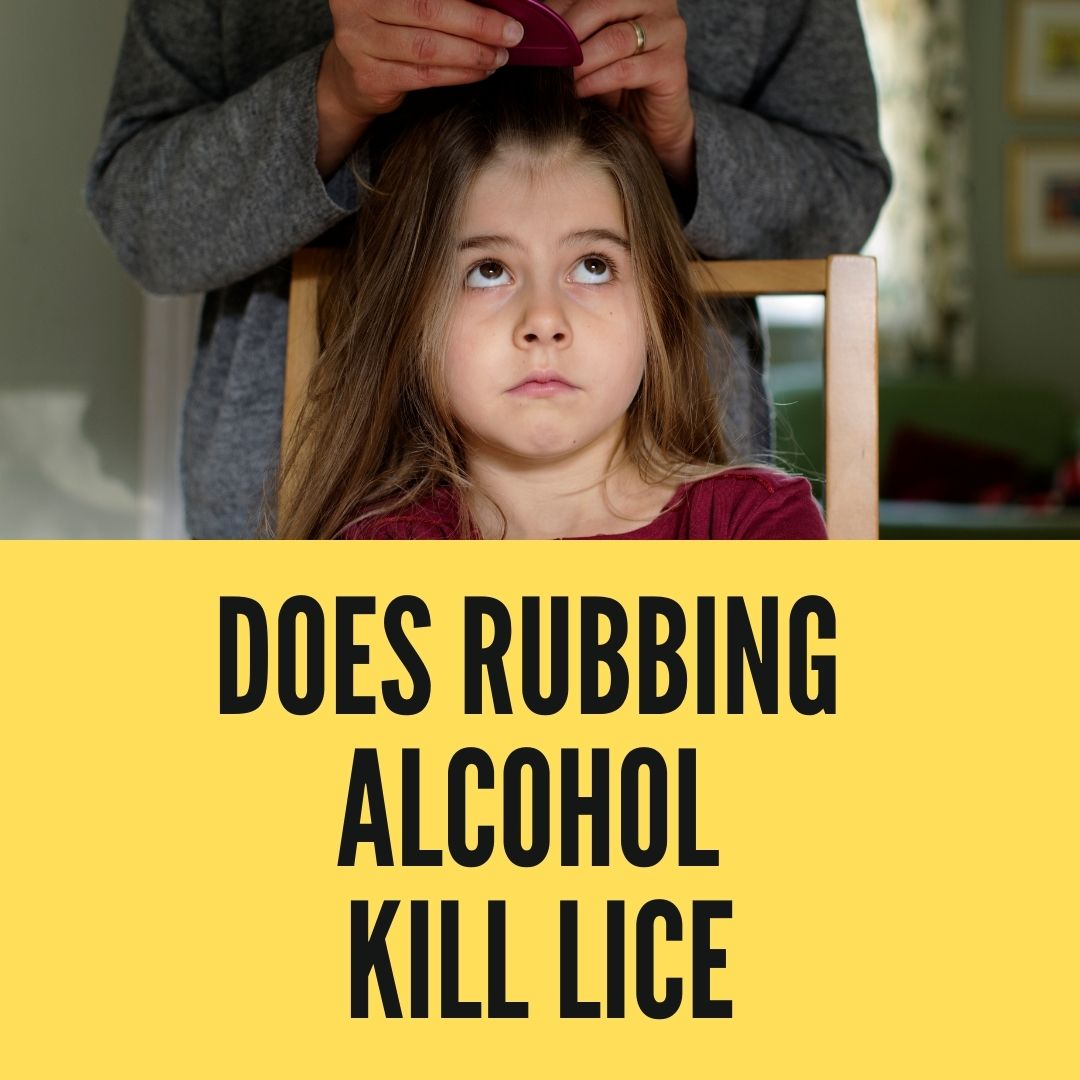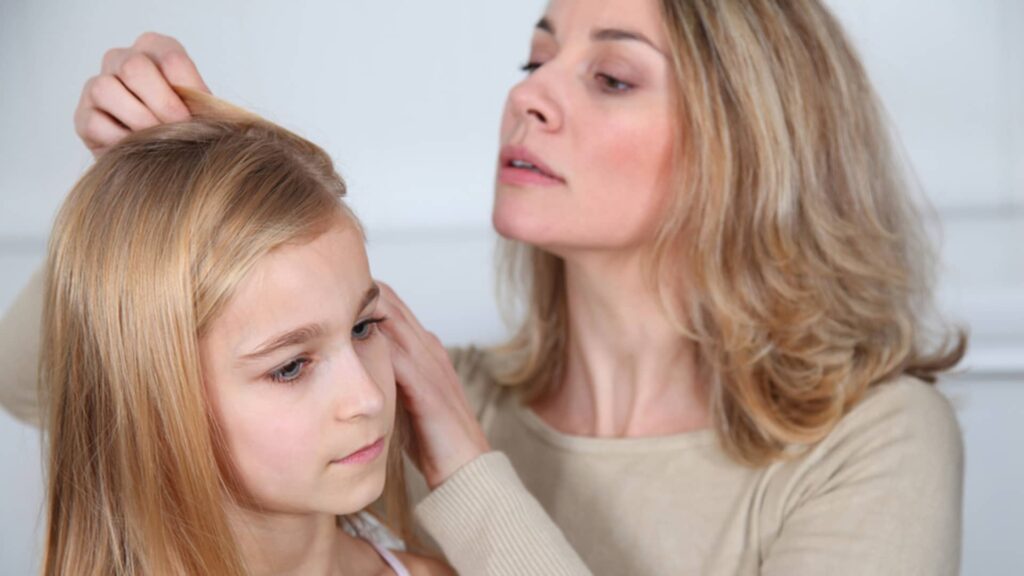
There are times when living in harmony with our surroundings only goes so far, and getting a case of head lice is one of those situations. While I’m all for preserving nature and green living, lice are where I draw the line. Let’s take a look at whether or not you can using rubbing alcohol to kill lice.
So does rubbing alcohol kill lice? Yes, rubbing alcohol does kill lice, but you have to be careful about how you do it. Using the wrong technique to kill lice with rubbing alcohol can result in scalp irritation, burning, and more. The best method to kill lice is to soak a comb or brush in rubbing alcohol before running it through your hair.

Bear with me as I go over exactly how you should treat yourself or a family member who has come down with lice using rubbing alcohol. I’ll discuss the techniques you should use as well as a few alternatives that are at your disposal if you don’t like the idea of using rubbing alcohol to kill lice.
Killing Lice With Rubbing Alcohol
Rubbing alcohol is effective at killing lice for the same reason that it’s effective at killing many small organisms. Alcohol is known to have a dehydrating effect, which is part of the reason why it’s so important to drink water when you’re drinking alcohol.
Rubbing alcohol, while poisonous, works in much the same way when it is used to kill things like lice and bacteria. The rubbing alcohol enters the organism’s system and dehydrates it to death. This works on lice because of how small and vulnerable their individual cells are.
The lice end up inhaling the rubbing alcohol, and this allows it to enter their systems and their cells, drying them up from the inside and killing them quickly. However, this doesn’t mean that rubbing alcohol is the number-one lice killing solution as it has a few downsides that you’ll have to consider.
Downsides of Using Rubbing Alcohol to Kill Lice
You’ll have to be careful when you’re clearing lice away with rubbing alcohol because the scalp is one of the most sensitive parts of the body. Due to the sensitivity of this skin, rubbing alcohol can irritate it a lot more easily than other parts of your body.
This leads to a lot of people inadvertently burning or hurting their scalps, as they assume that the effects will be similar to using rubbing alcohol as a massage liniment on any other part of their body.
Another issue is that rubbing alcohol can cause scalp dryness, which can result in the lice being replaced with dryness. Thankfully, there are a few ways to avoid the downsides of using rubbing alcohol to kill lice with the proper technique.
How You Should Kill Lice With Rubbing Alcohol
Ideally, you should soak a hairbrush in rubbing alcohol and run it through the infested person’s hair. While you’re doing this, make sure to keep the brush away from the skin of the scalp. If necessary, take sections of hair and gently pull them away from the scalp to run the brush through them.
While a hairbrush will soak up the rubbing alcohol more effectively, you can also use a comb if you don’t have a brush at your disposal. It will take a little bit longer for the comb to get the rubbing alcohol into the hair, and rubbing alcohol will be more likely to drip off of the comb onto the person’s scalp.
After using the comb or brush to clear the person’s hair of lice, you can also use more rubbing alcohol to clean it off. Ensure that you don’t skip this step, as any lice or eggs that are remaining in the comb or brush can then be transferred to the next person to use it.
Since eggs are typically found closer to the scalp, you may have to use a special comb to remove them. Be sure not to soak this comb in rubbing alcohol, as it will likely come into contact with the scalp. You can also use scissors to cut the hair follicles containing the eggs if they’re too close to the scalp to be easily removed.
Here are some other posts that might interest you:
- What Is Rubbing Alcohol?
- Alternative to Rubbing Alcohol for Cleaning Electronics
- Can I Put Rubbing Alcohol in My Ear
- Can You Use Rubbing Alcohol to Remove CPU Thermal Paste?
What Kind of Rubbing Alcohol Should You Use to Kill Lice?
There are two main varieties of rubbing alcohol:
While isopropyl is generally seen as a more effective cleaning agent, it should be avoided for lice-killing use as it is a lot more toxic than ethanol or ethyl alcohol. This is because isopropyl alcohol is toxic by nature, whereas ethanol has been rendered toxic so that it’s legal to sell.
Ethanol goes through a process known as denaturing, which is used to ensure that people can’t buy rubbing alcohol and drink it to circumvent tax laws. While denatured ethanol is still poisonous when consumed, it’s a lot safer to put on your skin, as the main ingredient (the alcohol) isn’t toxic in and of itself.
That being said, even when using ethanol, you must be careful to ensure that it doesn’t get in the person’s eyes or mouth, which is especially risky when you’re treating a particularly fidgety child.
Rubbing Alcohol Alternatives That Can Be Used to Kill Lice
There are plenty of alternatives to rubbing alcohol that can be used to kill lice, and the most obvious one is lice-killing shampoo. While this may be more expensive and harder to find than rubbing alcohol, delousing shampoo is designed to be less of an irritant, meaning that it can come into contact with your scalp with no issues.
The manual method can also be used to remove lice, and while it’s safe and effective, it’s also time-consuming.
Unfortunately, it’s nearly impossible to manually remove lice from your own head since you can’t physically see the back of your head. However, if you’re trying to clear someone else’s lice infestation, using a thorough manual cleaning method is an excellent option.

My name is Logan, and I’m a 36-year-old dad who owns a small pressure-washing company in the suburbs of Atlanta, Georgia. My main goal with rubbing-alcohol.com is to show you how versatile isopropyl rubbing alcohol can be! I hope. You find it useful.
